The Rise of Alternative Payments October 13, 2008
Posted by mniring in E-commerce, Online Merchants, Online Payments.Tags: Alternative Payment Methods, Alternative Payment Solutions, E-commerce, Email Payments, Online Merchants, Online Payments, Online Transactions, Payment Solution
add a comment
 In the next five years, online transactions will more than double, reaching $355.2 billion, reports a consumer study in the U.S. from Javelin Research and Strategy. According to the findings, by 2012, 30% of Americans will use alternative payment solutions for internet transactions instead of relying on their credit cards. In 2007, alternative payments accounted for 14% of transactions. The study also foresees that of all the alternative payment options, email payment accounts, like the accounts offered by Paystone, will see the largest growth, reaching 11% by 2012.
In the next five years, online transactions will more than double, reaching $355.2 billion, reports a consumer study in the U.S. from Javelin Research and Strategy. According to the findings, by 2012, 30% of Americans will use alternative payment solutions for internet transactions instead of relying on their credit cards. In 2007, alternative payments accounted for 14% of transactions. The study also foresees that of all the alternative payment options, email payment accounts, like the accounts offered by Paystone, will see the largest growth, reaching 11% by 2012.
What is causing this striking shift in payment processing? Increased popularity of alternative payment systems can be attributed to the current economic situation. With the credit market tightening, many people are looking to alternative payment solutions to fund their online shopping. This opens the way for services such as Paystone, that are debit based and funded by “cash” from a North American bank account, to take the place of credit card transactions.
Javelin researchers also found that people are turning to alternative payments for their convenience and enhanced security features. The Paystone system, for example, enables consumers to make online purchases without sharing any sensitive information with merchants, such as bank account numbers or billing information. This type of protection is becoming increasingly important to consumers.
 Alternative payment solutions also offer benefits to merchants, and help to remedy shopping cart abandonment. By offering alternative payment options, merchants allow their customers the flexibility to choose the most convenient method of payment for them. Merchants can create new sales opportunities by catering to their customers without credit cards or who no longer want to use credit cards for their purchases.
Alternative payment solutions also offer benefits to merchants, and help to remedy shopping cart abandonment. By offering alternative payment options, merchants allow their customers the flexibility to choose the most convenient method of payment for them. Merchants can create new sales opportunities by catering to their customers without credit cards or who no longer want to use credit cards for their purchases.
This is not deemed a short lived fad. “Although it took nearly a decade for alternative payment methods to secure their position in the online world, it’s apparent that everyday consumers are ready to view them as a trusted and viable way to buy online,” said Bruce Cundiff, a senior analyst with Javelin Strategy & Research. A recent survey conducted by First Annapolis Consulting found that 47 percent of the top 500 online retailers in the U.S. accept at least one alternative payment method.
It is believed that with the transformation of the payments industry, alternative payment methods will become mainstream. This isn’t simply a trend… the way that people want to shop online and pay for goods is undergoing an evolution. Is your web store keeping up?
For a copy of the complete Online Payments Forecast: Alternative Payments to Go Mainstream as Consumers Seek Security and Convenience, please visit www.javelinstrategy.com/research
Sources: Ecommerce Journal, Ecommerce Times, Javelin Strategy and Research
Globalization – How It Will Affect Your International Shipping October 10, 2008
Posted by paystone in Online Merchants, Sell to China.Tags: China inbound logistics, Courier service, DHL CHina, Fedex China, Ship goods to China, Ship to China, Shipping to China, Small parcel delivery, UPS China
add a comment
 Here at Paystone we solve a key problem for online merchants selling their goods into the Chinese market – getting the RMB money from China and delivering it to the merchant’s bank account here in North America in US or Canadian dollars. Receiving and converting the money is a major challenge – but it is only 1 of the challenges facing online merchants that want to expand sales into China. Some of the other key challenges include:
Here at Paystone we solve a key problem for online merchants selling their goods into the Chinese market – getting the RMB money from China and delivering it to the merchant’s bank account here in North America in US or Canadian dollars. Receiving and converting the money is a major challenge – but it is only 1 of the challenges facing online merchants that want to expand sales into China. Some of the other key challenges include:
– Shipping – how to get it there
– Duties and Taxes
– Finding out which products are allowed to sell into China
– Website optimization for the Chinese market – including translation and cultural issues
This posting will hopefully give you some insights into the Shipping part of this equation.
Taylor Systems Engeneering writes in a white paper that “as we reflect on what’s happening in the world of small parcels, we can see a clear trend emerging – globalization is going to affect our world more and more.” The big 3 carrieres – Fedex, DHL and UPS are all working hard to address this issue. 23% of Fedex’s revenues come from direct international shipments. Direct international shipments is also the fastest growing part of Fedex’s business.
Fedex is opening a $150 million Asian hub in China’s southern Guangzhou city. UPS is opening a $180 million cargo hub in Shanghai. DHL has plans to double the size of it’s air freight operation at the Hong Kong Airport with a $200 million investment program to increase their parcel service in China. DHL’s Jerry Hsu claims “China is today one of the fastest growing markets in DHL’s global network, registering and annual growth rate of 50-60% in 2004.” Wow!
What does this mean to you the online retailer? You can speak with your existing light parcel carrier about shipping goods into the massive Chinese market. The big 3 are investing heavily into that country to expand their network and expand their reach past only the Tier 1 cities of Shanghai, Beijing and Guangzhou.
With that said, you now have 2 of the major challenges of selling and shipping to China solved – getting the payment and delivering the product. We’ll talk more about the other issues of duties, taxes, restrictions, website optimization, translation etc in another post. In the meantime you can find lots of resources in the Sell to China section of this blog.
Taylor Systems Engineering Corporation is a leading consultant and provider of computerized shipping systems. Read their whitepaper on global parcel shipping here.
Please subscribe to our RSS feed for frequent updates to the Paystone blog.
The Real China Miracle October 9, 2008
Posted by mniring in Online Merchants, Sell to China.Tags: Chinese consumer demand, E-commerce in China, Retail market in China, Sell to China, Shopping trends in China
add a comment
 Want to see my “China credentials”? Fair enough. How’s this?
Want to see my “China credentials”? Fair enough. How’s this?
I might be the only American you meet all year who learned to use chopsticks in China. Of course, I was 42 years old at the time.
I’m just saying …
Don’t write me off as some expat poseur trying to spook you with the horrors of a “post-American world.” Heck, no. I love the old U.S. of A., both as a citizen and investor. But my trip to China opened my eyes to a few things.
This time last year, I accompanied my friend and colleague Bill Mann to China. From Beijing to Shanghai, from Hong Kong to Taipei to Macau, we took it all in, pausing to pick the brains of local business leaders and relay our findings to readers back home.
I’d never seen anything like it. These magnificent cities are exploding with people. And that spells opportunity for you.
You can look in four directions as far as the eye can see, and you see nothing but spectacular high-rises. At night it looks like Las Vegas: All the buildings are lit up; they look like rocket ships going off. It looks like the Fourth of July.
Our fortunes lie elsewhere
In case you think I exaggerate, that’s how a top U.S. real estate developer described Shanghai to business students at Wharton. Of everything I’ve heard, it comes closest to capturing the feeling of being there. What it doesn’t convey is the sense that this is only the beginning.
While we were in town, Oracle (Nasdaq: ORCL) unveiled a state-of-the-art research center, its third in China. Intel (Nasdaq: INTC) already had full-scale manufacturing, research and development, and sales operations in Shanghai, and Microsoft (Nasdaq: MSFT) and Cisco (Nasdaq: CSCO) had been there since 2005.
That’s small potatoes
Even without big tech, China’s economy has been growing at 10% per year for three decades, lifting more people out of poverty than any country in history. National Geographic dubbed it “the largest urbanization in human history” — with 150 million people and counting migrating to major cities.
One in four current residents of Beijing is a migrant from the countryside. You can hardly blame them — urban workers earn more than three times as much money as those living in rural areas. Buying a home, once beyond the dreams of the average Chinese family, is the latest craze in Beijing, where 1,000 new cars hit the roadways daily — and 96% are bought for cash.
Shanghai, once called “the Paris of the East,” accounts for 5% of the country’s GDP. One-fifth of the country’s total exports pass through its ports, now the busiest in the world. A top chef in Beijing or Shanghai earns as much as he or she would in New York or Los Angeles.
Living the good life
 The Great Wall is the most awesome structure I’ve ever laid eyes on, but when I close those eyes and think of Beijing, what pops to mind is Rolex (22% of affluent Chinese men own one) or Rolls Royce. The affluence of the new luxury class in Shanghai and Beijing is simply a sight to behold.
The Great Wall is the most awesome structure I’ve ever laid eyes on, but when I close those eyes and think of Beijing, what pops to mind is Rolex (22% of affluent Chinese men own one) or Rolls Royce. The affluence of the new luxury class in Shanghai and Beijing is simply a sight to behold.
In a mall in Beijing, you can browse three or four storefronts featuring Apple (Nasdaq: AAPL) products, and the company is aiming to open its first direct-run store by the time the Olympics begin later this summer. Lacoste, Valentino, Cartier, and Chanel are everywhere. Armani plans to open seven new stores in China in 2008, where young shoppers dig McDonald’s (NYSE: MCD) and pop into Starbucks (Nasdaq: SBUX) for an afternoon jolt.
No wonder 60% of the Fortune 500 has a presence in Shanghai, a number that grows by the day. You can’t help but wonder what the remaining 200 could possibly be thinking. China is already the planet’s largest consumer, for Pete’s sake, and the third-largest consumer of luxury goods in the world.
“The investment opportunity of a lifetime”
Nine times out of 10, you can dismiss statements like that as pure hype. But this is the rare case when the shoe fits. China may have hurdles to overcome, but the mass migration, urbanization, and rise of its middle class may be the investment story of our century.
But there’s a catch. This transformation will be measured in years, not decades. The smart money, as I discovered on my last trip to China, is already restless. Investors are looking beyond the skylines of Shanghai and Beijing to what I call The Real China Miracle. And I’d suggest that you and I should look there, too.
Morgan Stanley’s chief economist calls it, “The biggest economic story to come out of China in 25 years.” As far as I’m concerned, any company that doesn’t have a defined focus and strategy to exploit this demographic tsunami isn’t worth your time, energy, or money.
7 Ways To Improve International E-Commerce Usability October 8, 2008
Posted by mniring in Online Merchants, Sell to China, Shipping.Tags: E-commerce usability, International E-commerce, International Shipping, Online Merchants, Shipping Overseas
1 comment so far
Reposted from: Palmer Web Marketing
The following guest post comes courtesy of Linda Bustos from the Get Elastic Ecommerce Blog.
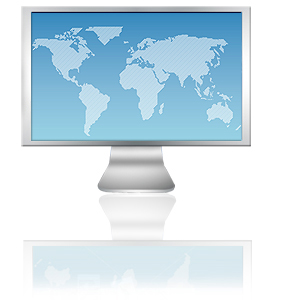 When you run an ecommerce website, you have the potential to sell products to people around the world — even from your own basement. But many online retailers expect to make international sales without doing all they should to help convert international shoppers. Here are a few ideas to help make the online shopping experience smooth for your international customers.
When you run an ecommerce website, you have the potential to sell products to people around the world — even from your own basement. But many online retailers expect to make international sales without doing all they should to help convert international shoppers. Here are a few ideas to help make the online shopping experience smooth for your international customers.
1. Have an International Shipping page
Sure, you could have it buried in an FAQ section, Help area or some other hard-to-find place — but why not make it easy for users to find International Shipping policies by making it its own link visible from every page on the site?
The footer menu is a common location for shipping information, as is the top right hand corner of your page. Conventions like this have conditioned online shoppers to check these areas for shipping information. If it’s not there, customers might just assume it’s not available. Placing this information in one of the two areas the customer is likely to look is a good idea. Placing it in both areas is even better.
Avoid hiding International Shipping information in the “Help” section. People can’t find it easily by scanning the page they are on, and some associate the word “Help” with technical assistance, not customer service.
2. Include Important Information on Shipping Page
Whenever possible, clearly state your:
– Return policies
– Telephone customer service hours of operation (and time zones)
– Estimated shipping times
– Order tracking availability
A list of all countries you ship to is also recommended. Remind customers that they may have to pay additional duties and taxes depending on where they live.
3. Make Your Shipping Policy Searchable
Make sure your international shipping page can be found using your site’s internal search engine. It’s a good idea to program your search engine to deliver this page for searches for “international,” “intl,” “international orders” and “international customers” too.
4. Show International Shipping Availability on Product Pages
You may carry some products that you can’t ship abroad even if you can ship most products. For example, certain health supplements are legal in some countries and illegal in others. It’s a courtesy to mention this before the customer gets to the checkout.
5. Convert Currencies, Weights and Measures on the Product Page
Most of us can’t convert centimeters to inches in our heads (clothing size charts, for example) or kilograms to pounds, let alone currencies that fluctuate daily. Providing conversion tools can increase conversions!
6. Estimate Shipping Costs on Your Product Pages
E-Commerce usability rockstars offer shipping cost tools right on product pages, which not only helps international customers but also locals. FedEx, UPS and USPS all provide API access for your web developer to make this happen. Offering the tool at the product page level also will reduce your rate of abandoned carts.
7. Send a Post-Sale Email
If you can segment your customer database by location, you can send targeted follow up emails to your international customers. For example, as the Canadian dollar rises more Canadians will shop online at US stores. Motivate your Canadian customers to visit you again by offering free shipping, discounts or other offers. Or, send an email from time to time asking how you can improve the shopping experience for international users. Even if they don’t respond, you send a powerful message that your business cares about foreign shoppers.
Of course, your own usability testing with international customers is the best way to learn about how your own site can be improved. There are even consultancies that offer international usability testing services. But these seven tips will give you a head start.
Canadian Thanksgiving Holiday – October 13th October 7, 2008
Posted by mniring in Send Money.Tags: Paystone Representatives, Send Money, Send money overseas, Send money to China, Send money to Mexico, Send money to Philippines
add a comment
 Monday, October 13th, 2008 is a National Holiday in Canada for the celebration of Thanksgiving. Paystone will be closed for the holiday, as will all Canadian banks. In-person transactions at the bank and Paystone customer service assistance will be unavailable on this day.
Monday, October 13th, 2008 is a National Holiday in Canada for the celebration of Thanksgiving. Paystone will be closed for the holiday, as will all Canadian banks. In-person transactions at the bank and Paystone customer service assistance will be unavailable on this day.
All online money transfers from Canada and the U.S. can still be sent as per usual . Some Paystone representatives will also be able to process your money transfers from Canada in-person during the holiday. Please contact your representative for China or the Philippines directly for service availability. Please note: There will be a one day delay on remittance transactions due to the holiday.
When sending money to the Philippines, China, Mexico and around the world, please note that all partner banks and institutions outside of Canada will be open for busines as usual on October 13th.
Alibaba Leader Highlights Success in China October 6, 2008
Posted by mniring in Online Merchants, Sell to China.Tags: Alibaba, Alipay, E-commerce in China, Jack Ma, Merchant Account, Online Merchants, Retail market in China, Sell to China
add a comment
In March of this year Jack Ma, the CEO and Chairman of the Alibaba Group, the largest e-commerce company in China, spoke in London about his company’s achievements and growth. He also highlighted the success of Alipay, the most popular online payment gateway in China.
As the lead founder of Alibaba, Ma spoke passionately about his vision for the company, its role in China and the obstacles faced at the outset. “Most people say that internet will be big trouble in China. China cannot have e-commerce, because China does not have the infrastructure for the internet, for e-commerce. China does not have the trust record, China has a problem with payment … We did not believe that kind of assumption.” Ma went on to say, “We have been persisting for nine years in China. People say there is no trust, we build Ali trust. People say there is no payment, we build Ali pay.”
Other facts brought up by Mr. Ma brought up about the Alibaba group:
– Alipay is the largest online payment system in China with 85% of the market share
– Alibaba.com boasts more than 100,000,000 page views per day
– When eBay first entered the Chinese market in 2002, they held 90% market share, with Alibaba at a mere 5%. After four years, the numbers were reversed and Alibaba is now firmly on top.
The success of the Alibaba Group, as Ma stated, “… proved that China has its own way of e-commerce.”
 Paystone’s partnership with Alipay allows North American online merchants to access Chinese shoppers on their own terms, offering consumers their preferred payment system. Tap into the massive online market in China quickly and seamlessly with Paystone’s Merchant Account.
Paystone’s partnership with Alipay allows North American online merchants to access Chinese shoppers on their own terms, offering consumers their preferred payment system. Tap into the massive online market in China quickly and seamlessly with Paystone’s Merchant Account.
China: Ten Things You Should Know About an Online Superpower October 3, 2008
Posted by mniring in Online Merchants, Sell to China.Tags: China stats, Chinese consumers, E-commerce in China, Retail market in China, Sell to China
add a comment
Reposted from: SEOmoz.org
China. Even in this day and age, sensitive information rarely leaks out of the Great Internet Firewall.
Fortunately for Western pundits, China toots its horn every six months with the release of a half yearly report on Chinese internet development. The July 2008 edition was recently released in English, but to save you from reading through 27 pages of dry research and occasional Engrish, SEOmoz has summarized the report for you.
Here are the top three facts that China wants you to know about the internet:
1. China has the most internet users in the world
“…by the end of June 2008, the amount of netizens in China had reached 253 million, surpassing that in the United States to be the first place in the world.”
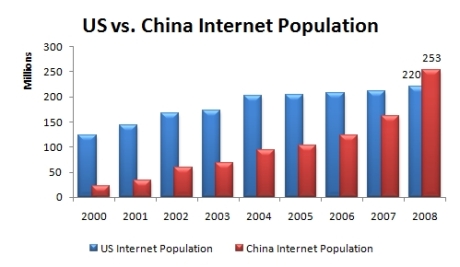
2. China has the most broadband users in the world
“This report, the 22nd Statistical Report on the Internet Development in China, also indicates the number of broadband users has reached 214 million, which also tops the world.”
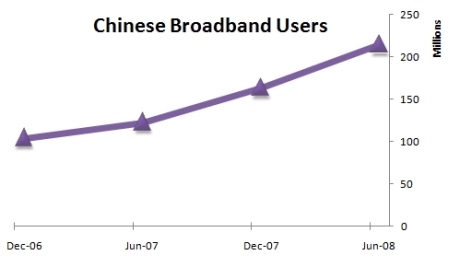
3. China has the most cc-TLD domain names in the world
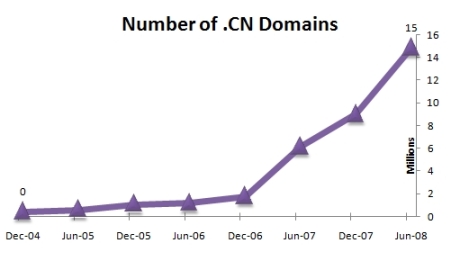
Source for charts: CNNIC, Nielsen Netratings, ITU
-
- “…by the time of July 22, the number of CN domain names, which was 12.18 million, had exceeded .de, the country-code Top Level Domain for Germany, thus becoming the largest country code Top-Level Domain names in the world.”
So that’s what the Chinese government wants you to know about their internet, but SEOmoz couldn’t resist creating a top 10 list, so we humbly suggest seven more nuggets you should know about China.
4. China’s internet penetration rate continues to grow and grow and grow…
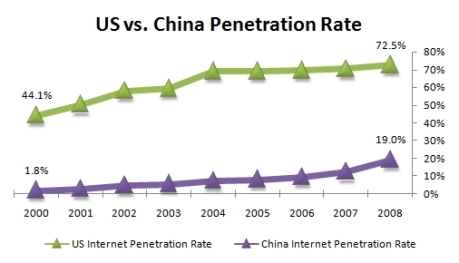
- US internet usage has hovered around a 70% penetration rate in the last five years, while Chinese internet penetration has jumped from 7% to almost 20% in the same time period.
- Translation: China could plausibly reach a similar penetration rate to the US within 20 years.
- What impact would a single nation of almost one billion Internet users have on internet activities such as blogging, creating videos or online commercial transactions (i.e., buying stuff)? How much additional user generated content would Chinese users unleash on the world wide web? What Western companies are ready to take advantage of this flood of internet usage?
5. China loves instant messaging QQ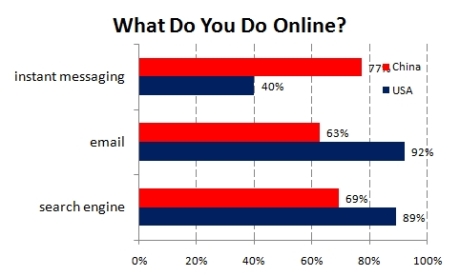
- IM usage is more popular than email and using search engines in China

- 195 million Chinese (an incredible 77.2% of Chinese internet users) have used an instant messaging service in the last 6 months, compared to just 40.0% of US internet users who have _ever_ used IM
- Once online, 39.7% of Chinese internet users cite IM as the very first thing they do, more than any other internet activity
- Tencent’s QQ program is the leading IM program with 77% market share
- QQ has 342 million active user accounts
- QQ has 42 million peak concurrent users
- QQ has 26.1 million paying internet subscribers & 13.4 million paying mobile subscribers – wow, an IM program with 40 million paying subscribers (envious, MSN and Yahoo?)
- QQ.com is one of the biggest websites in the world, ranking in the top 3 web properties in China, alongside Baidu and Sina
6. China loves mobile phones
- China has 601 million mobile phone users according to the latest government report
- From January 2008 to June 2008, there were 53.3 million new mobile phone users
- One carrier, China Mobile, has over 414 million mobile subscribers, ranked #1 in the world
- However, bad news: only 12% of these users have accessed the Internet. Because of the lack of proper 3G network (none of the Chinese telcos have a 3G license), an estimated 73 million had accessed the internet from a mobile phone
- Good news – the Chinese government plans to issue 3G licenses to the major telcos within the next 6 months, which means…
- A potential bonanza for phone manufacturers around the world as someone has to come good with 601 million new 3G handsets (the sheer size of the Chinese market will be beneficial for all as economies of scale ensure global prices for 3G handsets/accessories will fall)
7.  The Great Firewall of China is alive and well
The Great Firewall of China is alive and well
- Think you know how to game social networks? Try going head-to-head with the “Fifty Cent Party” – an estimated 280,000 strong army of government-trained social networkers
- The Far East Economic Review says the Fifty Cent party has one objective – “To safeguard the interests of the Communist Party by infiltrating and policing a rapidly growing Chinese Internet”
- According to the Feer.com’s source, high authority Chinese websites are forced to have their own in-house team of government goons patrolling content for political correctness
8. China’s Tier II & Tier III cities – wait, there’s more to China than just Beijing and Shanghai?
- According to this fool.com article, 93 cities in China have more than 1 million population, compared to just 9 in the US
- Beijing, Shanghai, Hong Kong and Macau (and sometimes Guangdong and Shenzhen) are usually referred to as China’s Tier I cities.
- Tier I cities are already saturated by foreign companies and foreign direct investment in just about every market you could think of…
- Which is where Tier II cities come in – boasting huge populations, transport hubs and booming economies, most Tier IIs fly under the radar despite having lower barriers to foreign entry. For example, Chongqing is a Tier II municipality with a whopping 32 million residents and more than 3 million internet users
- Check out the big 30 Tier II and Tier III cities showcased in this April 2007 China’s 30 Rising Urban Stars
9. There are no girls on the Chinese internet
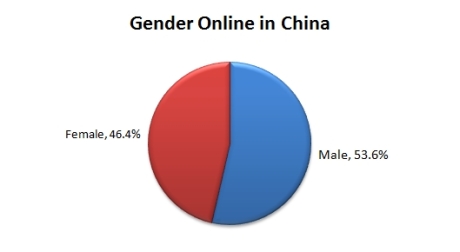
- Not sexism, as Chinese women are as likely as their male counterparts to go online – the internet gender ratio corresponds almost exactly with China’s actual gender imbalance of 53% Male, 47% Female
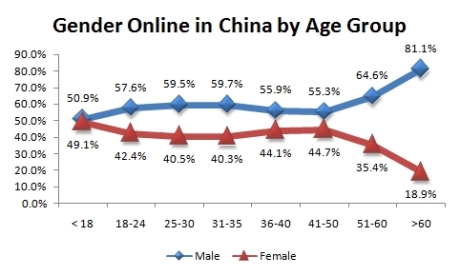
- Included the above chart because I’m stumped, pretty sure the disparity has nothing to do with the infamous One Child policy (it was introduced in 1979), so what’s going on with the over 50s?
10. The rise of Chinese superbrands
- Q: What does China Mobile have in common with Google, GE, Microsoft, Coca~Cola?
- A: They represent the top 5 brands in the world, as measured by the dollar value of their brand
- From the way this dragon has risen from its slumber, it may not be long before the first Chinese superbrand goes global – in 2007 four of the world’s 100 most powerful brands were from China (five if you include HSBC bank)
So there you have it folks, 10 things you should know about China. I hoped SEOmoz has helped lift the red curtain enough to unveil the potential in the East.
Alipay Reaches 100 Million Mark October 1, 2008
Posted by mniring in Online Merchants, Sell to China.Tags: Alipay, China stats, Chinese consumers, E-commerce in China, eCommerce, Merchant Account, Payment Solution, Sell to China
add a comment
 Alipay, China’s most popular online payment platform, reached 100 million registered users at the end of August. Alipay is now the second largest payment platform in the world, right after PayPal, with its 180 million users. Alipay currently boasts a 76% share of the online payment processing market in China.
Alipay, China’s most popular online payment platform, reached 100 million registered users at the end of August. Alipay is now the second largest payment platform in the world, right after PayPal, with its 180 million users. Alipay currently boasts a 76% share of the online payment processing market in China.
What is particularly notable about Alipay’s success, is that they have reached the 100 million milestone in only 5 years. It took Paypal 10 years to achieve the same mark . It is also important to point out that Alipay’s member base is strictly Chinese citizens. Paypal’s user base is dispersed around the world.
The incredible speed of Alipay’s development is directly related to the development of online consumers and Interet users in China as a whole. China currently has the largest number of people online in the world, representing a mere 22% of the Chinese population.
The huge potential of this burgeoning market and its implications for online merchants wanting to sell to China, goes without saying. While online shopping rates in China currently lag behind those of other countries, it will only be a matter of time before China boasts the largest e-commerce market in the world.
Is your company ready to capitalize? Click here to find out how Paystone can help your eCommerce store tap into this massive network and start selling to China today.
Sources: Alipay.com, China Internet Network Information Center , China Tech News
US Postal Service – Made Easier for Online Retailers September 29, 2008
Posted by mniring in Online Merchants, Sell to China.Tags: Shipping methods, Shipping Overseas, Shipping to China
add a comment

The United States Postal Service (USPS) has redesigned its website to improve customer satisfaction and increase ease of use. It is now easier for retailers to find shipping information and services for both domestic and international needs.
“We are committed to making USPS.com one of the best government web sites, and one of the best web sites in the nation,” says Robert Bernstock, president, U.S.P.S. Shipping and Mailing Services. “These changes help guarantee that our web site is relevant, customer-focused and, most important, easy to use.”
The new business section is of particular interest for e-commerce merchants selling and shipping their products both nationally and internationally. Online retailers can choose between a variety of shipping methods, that include options such as tracking, guaranteed delivery, insurance and express services.
Retailers selling overseas can take advantage of the international shipping section , with resources and information on topics such as customs, shipping rates and export regulations. Online merchants selling to Chinese consumers can check out the USPS’ country specific pricing and guidelines for China.
National Day Holiday in China – October 1st September 26, 2008
Posted by mniring in Send Money.Tags: Send money to China
add a comment
 October 1st is the National Holiday for the People’s Republic of China. Banks, including Paystone’s partner bank SPDB, will be closed for the holiday from Wednesday, October 1st to Friday October 3rd.
October 1st is the National Holiday for the People’s Republic of China. Banks, including Paystone’s partner bank SPDB, will be closed for the holiday from Wednesday, October 1st to Friday October 3rd.
You can send your remittance from Canada and the U.S. as usual. When sending money to China, please note that cash pickups from SPDB will not be possible on those days. Sending money via direct deposit to an SPDB bank account is not affected. Paystone is open for business during the holiday. All money transfers will be processed as usual.
OFWs – Major Contributors to the Philippine Economy September 24, 2008
Posted by mniring in Send Money.Tags: OFWs, Send money to Philippines
add a comment
 Sending money home to your loved ones in the Philippines is an important and admirable contribution. Your family members know they can always count on your support, even when you are far from home. But did you know that every time you send remittance to the Philippines, you are not only supporting your family, but contributing to the economy of your country as a whole?
Sending money home to your loved ones in the Philippines is an important and admirable contribution. Your family members know they can always count on your support, even when you are far from home. But did you know that every time you send remittance to the Philippines, you are not only supporting your family, but contributing to the economy of your country as a whole?
Your Filipino remittances are major contributors of foreign exchange and Gross National Product (GNP) to your home country. Official reports say that OFW remittance volume constitutes 10% of the GNP of the Philippines. That’s 5 times more than all direct foreign investment in the country!
It’s no wonder then that the president, Gloria Macapagal-Arroyo, hailed you, the overseas Filipino workers, as “true global pioneers” in her speech before the 63rd United Nations General Assembly in New York.
The next time you send money home to the Philippines, know that you are not only doing service to your family, but to your entire country at the same time.
Sources: Joel Guinto for Inquirer.net and Babe Romualdez for The Philippine Star
October 1 – non-working holiday in the Philippines September 24, 2008
Posted by mniring in Send Money.Tags: OFWs, Send money to Philippines
add a comment
 President Arroyo has declared that Wednesday, October 1, 2008 is a national, non-working holiday in observance of Eid’l Fitr, or the end of the Muslim holy month of Ramadan.
President Arroyo has declared that Wednesday, October 1, 2008 is a national, non-working holiday in observance of Eid’l Fitr, or the end of the Muslim holy month of Ramadan.
You can send your remittance from Canada and the USA as normal. For all OFWs and individuals sending money to the Philippines, please note that banks in the Philippines, including BDO, will be closed on this day. Your friends and family will not be able to pick up cash in person at Paystone’s partner banks on October 1st. Paystone’s other delivery services for the Philippines, including pickups at Shoemart and home delivery, will not close for October 1. Sending money from North America will continue to function as normal. Paystone will be open for business as usual.

